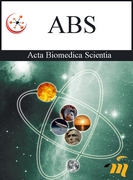Volume 4, Issue 3, 2017

Mcmed International
Acta Biomedica Scientia
Issn
2348 - 215X (Print),
2348 - 2168 (Online)
Frequency
bi-annual
Email
editorabs@mcmed.us
Journal Home page
http://mcmed.us/journal/abs
Recommend to
Purchase














